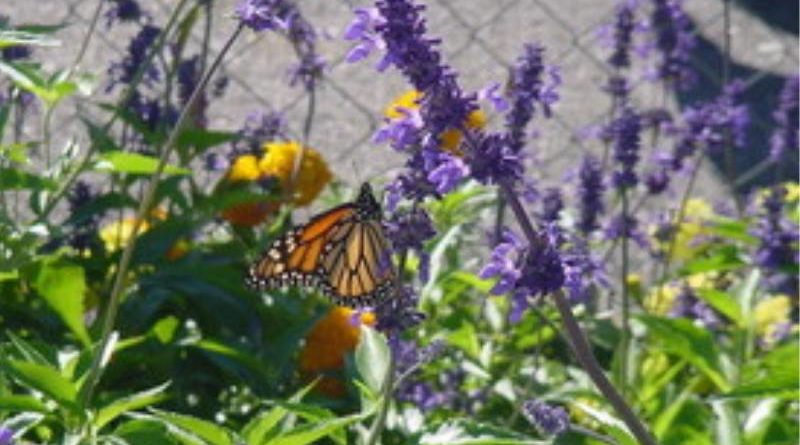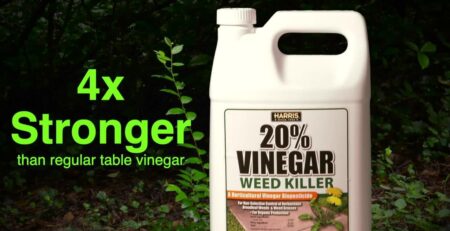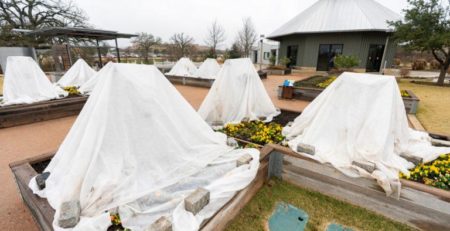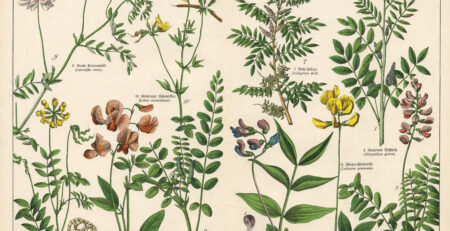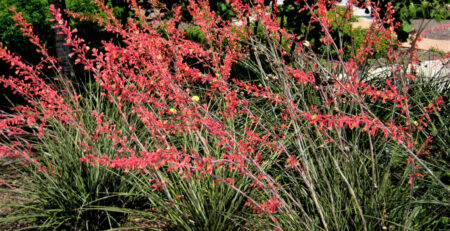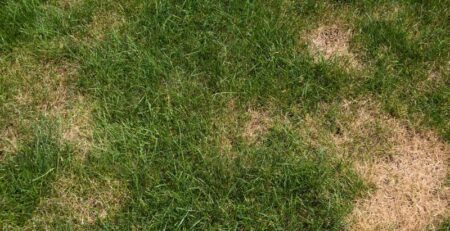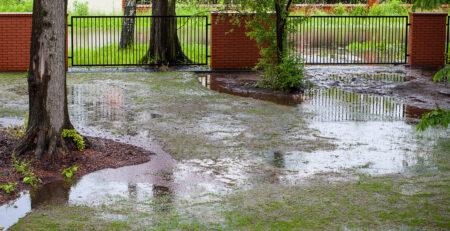How to Choose the Right Plants
Most nurseries try to stock plants that people like and that will grow well in the average yard. Many landscape favorites however are not well adapted to the soils and climate of North Texas. A plant tag can provide basic information about growing requirements for that particular plant, but without some knowledge of your particular site, you may find yourself with a plant that does not perform well or requires a lot of work to keep healthy. Before choosing a plant, it is important to consider the plant’s preferred soil type, cold hardiness, and heat tolerance.
The predominant soil type in North Texas is clay. Clay is heavy. It is sticky when wet, crusty and hard when dry; and it absorbs water slowly, and drains slowly. Consistent moisture is difficult to maintain in clay soils and they tend to be alkaline, which means plants preferring an acidic environment may have difficulty extracting nutrients from our local soil. Plants that thrive in clay are extremely hardy and have root systems strong enough to break through heavy soils and handle the heavy compaction that occurs. When you read a plant tag and see “prefers acidic, moist, well-drained soil,” know that you may need to prepare a special bed for this plant and be prepared to monitor and treat nutrient deficiencies on a regular basis.
Cold hardiness is a measure of how much cold a plant can withstand without suffering damage. A plant’s cold hardiness is designated by a number from 1 to 13, based on the USDA’s hardiness zone map. On the USDA scale, 1 indicates the coldest winter temperatures and 13, which is the warmest. North Texas falls within USDA hardiness zone 8a. In zone 8a, low winter temps are expected to fall within the range of 10-15°F. If your plant is labeled for zone 8a or lower, then the odds of your plant surviving the winter are good. You may need to protect the plant, however, during an unseasonably cold winter, or if it’s situated in an area exposed to winter winds. You may see a plant tag labeled simply, “hardy to zone 8.” Zone 8 is divided into two sub-categories, 8a and 8b. The expected low winter temperatures in zone 8b are between 15-20°F, slightly warmer than 8a. If the plant tag doesn’t discriminate between 8a and 8b, you may want to do additional research to determine the cold hardiness of that particular plant. Plants labeled for zone 9 and above cannot be expected to overwinter in the landscape.
Some plants need cold in order to bloom or fruit. Many fruit and nut trees, many flowering bulb species, and some perennial species require a certain number of cold, but not freezing, hours during the winter in order to break dormancy and resume normal growth in the spring. This chilling requirement of plants is expressed in “chill hours.” If the number of chill hours is not met, a plant may fail to bloom or produce fruit. Peonies, lilacs, tulips and hyacinths are some species that perform poorly in North Texas due to insufficient winter chilling.
Hardiness is a measure of cold tolerance, but heat tolerance is another important factor in determining plant survival. Plants begin to suffer heat stress when temperatures climb and remain above 85°F. Dallas, Texas and Portland, Oregon both fall within hardiness zone 8a, but in Portland, the average number of days above 90°F is about 15. In Dallas, however, the average number of days above 90°F is more than 100. Plus, the average number of peak sun hours in Texas is greater than that of more northern areas. So full sun in Portland is not the same as full sun in Dallas. If the plant tag does not specify heat tolerance, you can guess if a plant may be adapted to heat by looking at its cold hardiness. If a plant is hardy in a very cold zone (such as 2 or 3) as well as zone 8a, there is a good chance it could be stressed during our long summers. Providing protection from afternoon sun may help some plants, but expect some trial and error finding the ideal spot for heat sensitive plants at your site.
Not sure how to decide which plants to choose? There are many wonderful resources to help you select plants known to thrive in North Texas.
- Texas A&M AgriLife Water University has compiled a list of Top 100 Plants for North Texas.
- Texas Superstar® Plants are those that have been officially recognized by Texas A&M as providing superior performance in Texas. Visit the Texas Superstar® site for a list of recommended plants.
- The Dallas Arboretum conducts annual plant trials to identify plants that thrive in the Dallas area and provides a list of some top performers.
- Texas SmartScape™ is a program that promotes the use of plants suited to our region, soil and climate. Their site includes design tools and more.
- Texas A&M tracks and reports chill hours for various regions in Texas.

